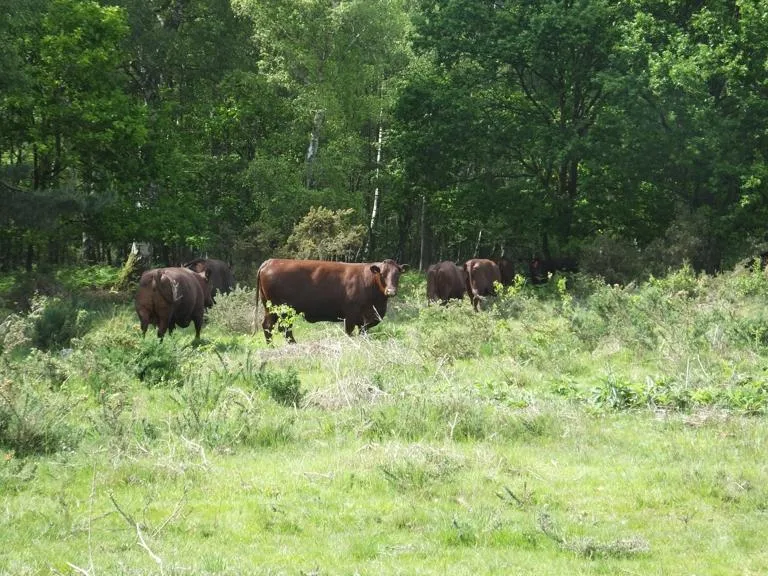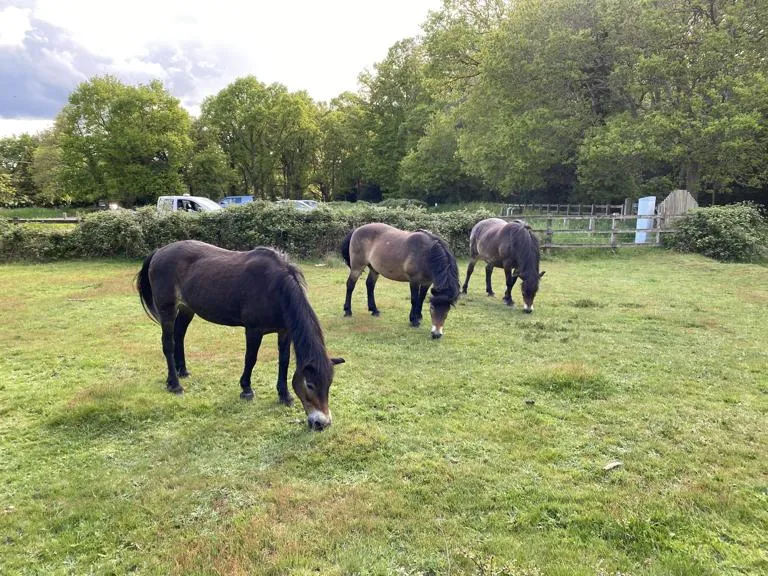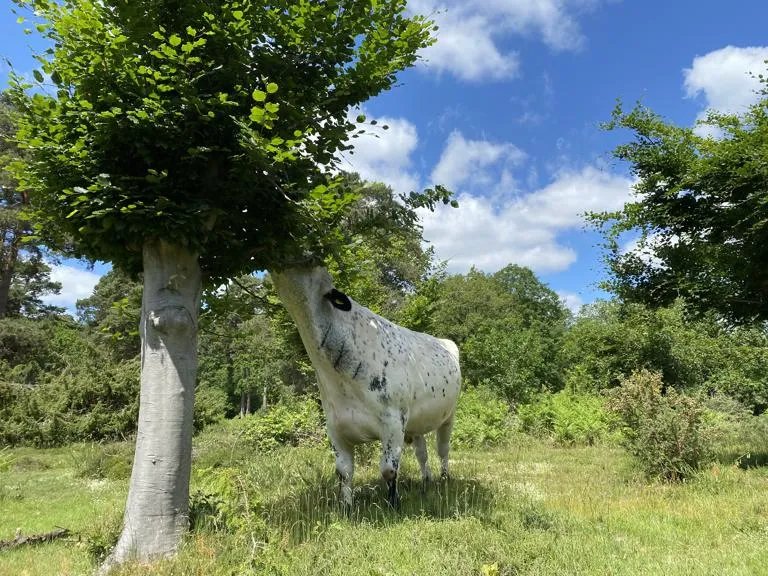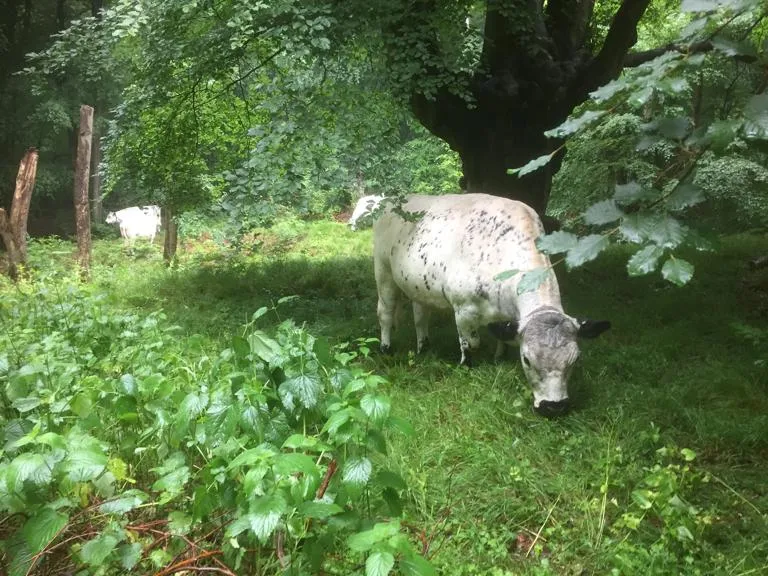Grazing animals at Burnham Beeches and Stoke Common
Grazing animals at Burnham Beeches and Stoke Common
Grazing cattle and ponies are an integral part of how we manage the nature reserves. Due to the varied way they graze, scrub and young trees are kept under control whilst grasses and flowering plants thrive in the open habitats. The mix of plant types, heights and densities that this creates (known as a mosaic) is great for wildlife, especially invertebrates and small mammals. Mowing cuts everything to the same length and is less good for wildlife diversity.
All the livestock that we use are traditional breeds that are docile and suited to the type of rough grazing that is available at the nature reserves. At Burnham Beeches we use British White cattle and Exmoor ponies. We have also used Berkshire pigs in the autumn to eat the acorns and beech mast. At Stoke Common we also use Exmoor ponies, but here Sussex cattle graze the heathland.
We use a variety of different systems to keep the livestock in their grazing areas. At both nature reserves, we have traditional post and wire or post and rail fences with gates to allow access at footpaths and bridleways. We also sometimes use a temporary electric fence when we need to keep the animals within a specific area.
At Burnham Beeches we also use ‘invisible fences’. In this system, cows wear collars that pick up signals from either buried cables or, more recently, through a satellite controlled GPS system; if they walk close to the boundary of the 'virtual paddock' they hear a ‘beep’ but if they go too far they get a small shock. They learn to turn away when they hear the beep and do not stray from the grazing area. This system has enabled us to graze most of Burnham Beeches without the restrictions created by traditional fences.
We use docile breeds, but the behaviour of all animals can be unpredictable -they are not pets. Please do not approach any livestock or attempt to stroke them and, if you want a picture, use a zoom lens. Please do not feed them as this can be very bad for their health, bad for the nature reserve and encourages them to display poor behaviour.
The livestock are generally on the nature reserves from spring to autumn although the ponies in particular tend to stay most of the winter. We do not feed them whilst they are on either nature reserve because they get all the food they need from the natural vegetation; feeding would also bring in nutrients and could bring seeds from plants not normally found here – both of these things would impact negatively on the reserves. We check them all daily to make sure they have plenty to eat, fresh water to drink and are generally fit and healthy.
Whilst they are on the nature reserves the livestock create dung. This is material that they have eaten whilst grazing and so it is not adding extra nutrients to the eco-system. As many invertebrates and fungal species have evolved to feed on herbivore poo (including some that are special and rare), their dung decomposes quickly. It also does not contain any chemicals as they are taken off the reserve for veterinary treatments.
Dog walkers are welcome on both nature reserves but dogs must be kept under effective control. It is best if they are under close control near livestock and you must stick to the Public Spaces Control Orders at Burnham Beeches. You should always pick up after your dog and please also be aware that dog faeces can carry Neospora which can make cows abort their calves and Toxocara which can cause blindness in humans.



